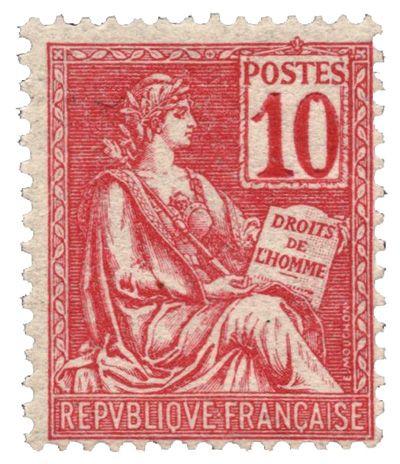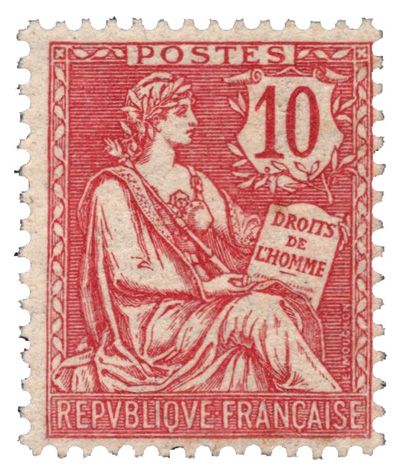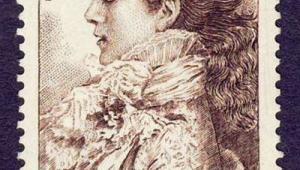France: Femme fatale?

France's 'Mouchon' 10c carmine, type I, of 1900
Louis-Eugène Mouchon was a prolific designer and engraver whose work can be seen on many stamp issues, not just from his native France but from countries across Europe and as far afield as Iran and Ethiopia.
Just one, a French definitive design of December 1900, is generally known by his name. But it cannot really be said to be his moment of glory, as it was widely criticised, even during his lifetime.
The 1900 series had three different designers. Mouchon was responsible for the middle values, slotting in between the ‘Blanc’ low values and the ‘Merson’ high values.
His contribution depicted a female allegory of the French Republic, complete with her Phrygian cap, seated with a Human Rights tablet in her left hand and a Sceptre of Justice in her right.
An odd detail, which is easy to miss, is a tiny lion’s head peeping out of her bra as a symbol of defiance. Be a devil and take a closer peek with your magnifying glass!
The design was scorned from the very beginning, both by the philatelic brotherhood and by the general public. Some commentators saw in it a promiscuous woman soliciting in her window, with her house number on display and a dubious invitation to men displayed on her lap!
But even those who saw the design for what it was were none too impressed, with the size and prominence of the value tablet in particular being frowned upon.
The stamps were printed in typography, originally from two plates: a key plate for the design and another for the numeral of value.
As a consequence, all four of the initial values – a 10c carmine, a 20c brown, 25c blue and a 30c mauve – may be found with misplaced numerals, or even with the denomination missing completely.
A second printing soon followed from a single plate, this time comprising the 10c, the 25c and a new value, the 15c orange.
The two printings are fairly straightforward to tell apart, with the base of the 1 in ‘10’ being flat on type I and curved on type II, and the bottom line of the 25c’s value tablet being continuous on type I and interrupted on type II.

The 10c carmine from the redrawn set issued in 1902
Meanwhile, Mouchon had been ordered back to the drawing board to improve his design. A redrawn version was duly introduced for all five values in April 1902, the main differences being less heavy shading and a more subtle value tablet.
But it was not enough. The concept was still disliked, so much so that within a year it was replaced by the ‘Sower’ definitive, even though the contemporary Blanc and Merson designs were retained.
The Mouchon definitive might have left the domestic stage prematurely, but the redrawn version would be extensively used throughout the French colonies, where it would remain in circulation for nearly 30 years. It was the basis for one of a number of key types, only slightly tweaked to allow for the relevant colony’s name to be included at the bottom.
With the various local currencies involved, and the many surcharges that were issued, the series became an interesting reflection of the heyday of French colonialism.















